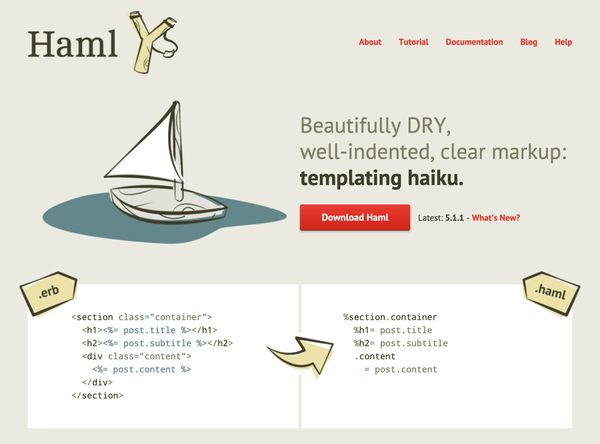HTML: a new aesthetic

HTML (and XML and XHTML) is an ugly grammar for marking up documents, and for better or worse, it’s the lingua franca of the web. The only argument for a more primary language “of the web” would be JSON, which sadly is much worse than HTML and even uglier, but that’s a story for another time.
The problem with HTML is in part its verbosity — too many angle brackets and closing tags can trip people up and waste time typing. The good news is that there’s a better way: new grammars for writing better-looking HTML with a minimum of angle brackets and unnecessary tags.
As a side benefit, these new pre-processor grammars for HTML like Haml solve the “unclosed” or “crossed-closed” tags problem, where sometimes tags would be closed out of orde,r or not closed at all, tangling the markup and baffling the parser.*
Ruby led the way in pushing for a cleaner, more elegant HTML syntax as the server level, as a pre-processor so developers could write a simple syntax that would compile down to browser-compatible HTML when rendered by the app server. It was called Haml, and it was polarizing, and yet also very good.
Ruby was first, but soon followed by the Java and Javascript communities, as has often been the case, with Jade, which was forced to be renamed to Pug following a naming / copyright dispute. Apropos of nothing, open source name conflicts can be funny and dramatic — who can forget the Kik/NPM/“left-pad” fiasco, or Octokit’s previous project name?
* in modern HTML5 markup, this is rarely an issue, but it used to be.